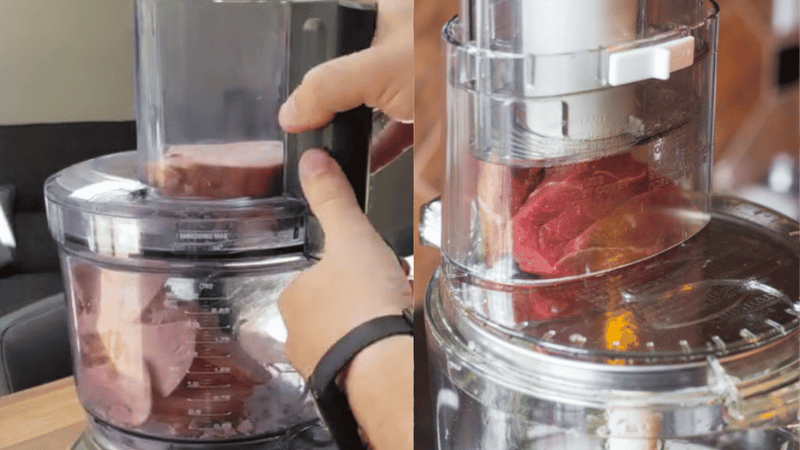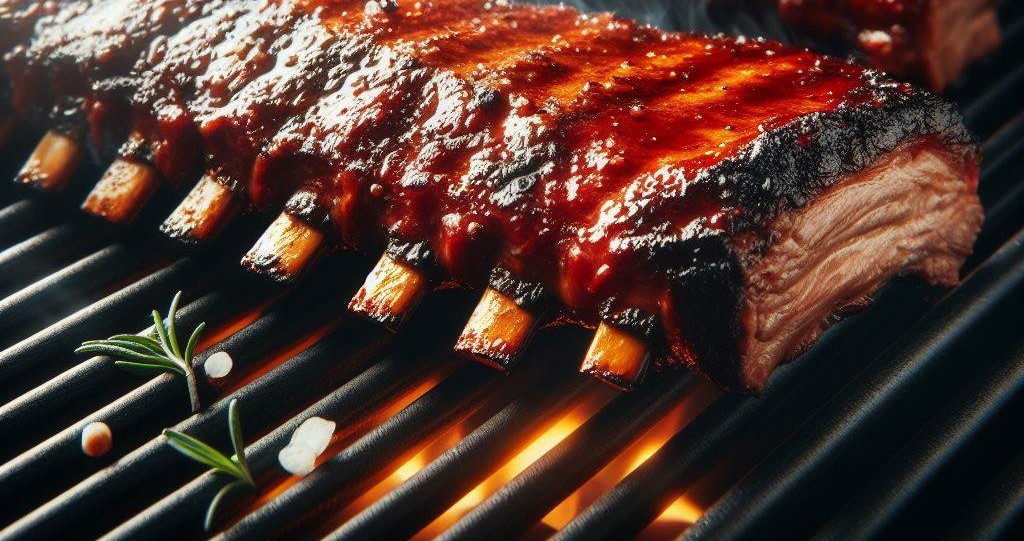Yes, slicing meat with a food processor can be a great option if you take the necessary precautions. Food processors are capable of quickly and easily cutting through raw meats. However, taking proper safety measures is essential to ensure your food remains safe.
Before slicing any meat in your food processor, clean it thoroughly and use fresh blades that have not been used on other foods. It’s also recommended to partially freeze the meat before placing it into the processor; this will help to keep the pieces from sticking together when they are cut. Finally, be sure to fill your processor appropriately- this could cause inaccurate cuts or even damage the motor.
Slicing meat in a food processor can be a time-saving and convenient method for many home cooks and professional chefs alike. While some may argue that slicing meat by hand yields better results, the modern technology of food processors has made it easier than ever to achieve thin, uniform slices with minimal effort. The key is to use the correct blade attachment and ensure the meat is partially frozen for optimal results.
Potential Drawbacks of Slicing Meat in a Food Processor
While slicing meat in a food processor offers several advantages, there are potential drawbacks and considerations to keep in mind.
Potential Damage to the Food Processor
Slicing meat in a food processor can put additional strain on the appliance, especially if it’s not specifically designed for heavy-duty meat slicing. The tough fibers and textures of certain cuts of meat may cause wear and tear on the blades and motor, potentially shortening the lifespan of the food processor.
Safety Concerns and Precautions
It’s important to exercise caution when slicing meat in a food processor to avoid potential safety hazards. Sharp blades and fast-moving parts pose a risk of injury if not handled properly, emphasizing the need for following safety guidelines and using appropriate safety measures during operation.
Limitations in Slicing Certain Cuts of Meat
Some food processors may struggle to slice through particularly tough or sinewy cuts of meat, leading to inconsistent results or potential damage to the appliance. It’s important to assess the capabilities of your food processor and choose suitable cuts of meat for slicing to avoid potential issues.
Tips for Safely Slicing Meat in a Food Processor
To make the most of slicing meat in a food processor while ensuring safety and optimal results, consider the following tips:
Choosing the Right Type of Meat for Slicing
Select cuts of meat that are suitable for slicing in a food processor, such as boneless beef or pork, to minimize strain on the appliance and achieve desirable slicing results.
Preparing the Meat for Slicing
Trim excess fat and connective tissue from the meat before slicing to facilitate smoother processing and prevent potential damage to the food processor’s blades.
Operating the Food Processor Safely and Effectively
Follow the manufacturer’s instructions for operating the food processor and use appropriate safety measures, such as securing the lid and avoiding overloading the appliance, to ensure safe and effective meat slicing.
Conclusion
In conclusion, the use of a food processor to slice meat offers notable benefits in terms of convenience, versatility, and uniformity in slicing. However, it’s essential to be mindful of potential drawbacks such as strain on the appliance, safety concerns, and limitations in handling certain cuts of meat. By following safety guidelines and considering the suitability of the meat for slicing, you can make the most of this kitchen tool while minimizing risks.
When considering whether to slice meat in a food processor, weigh the pros and cons to determine if it aligns with your specific cooking needs and preferences. If you decide to explore this method, exercise caution and consider alternative methods for slicing meat at home, such as using a dedicated meat slicer or traditional knife techniques, to broaden your culinary capabilities.
In summary, the decision to slice meat in a food processor should be informed by a balanced assessment of its benefits and limitations, coupled with a commitment to safe and responsible usage in the kitchen.



![16 Best Tabletop Propane Gas Grills 2024: [Also Charcoal & Electric]](https://kitchentechwiz.com/wp-content/uploads/2021/04/Best-Tabletop-Propane-Grill-1.jpg)

Leave a Reply